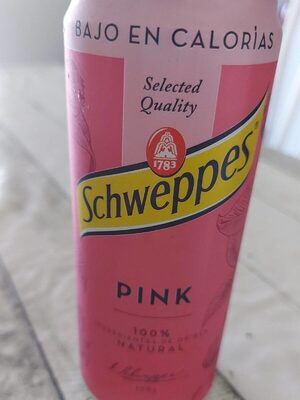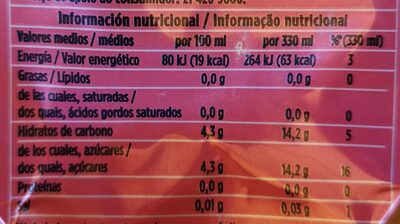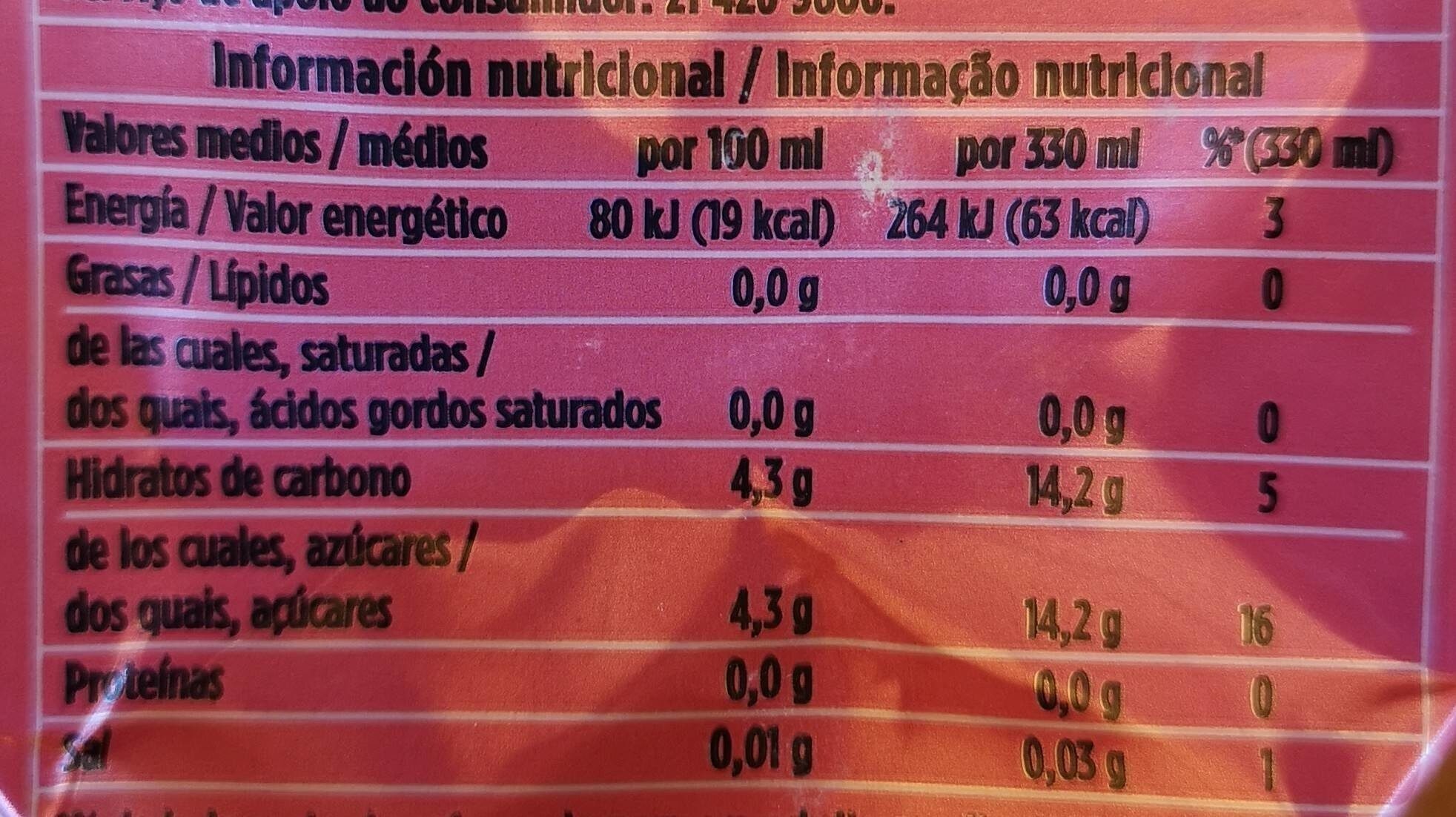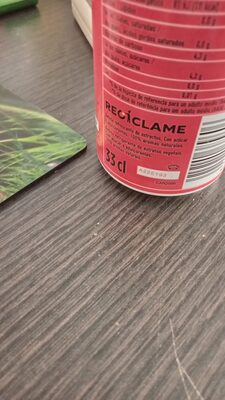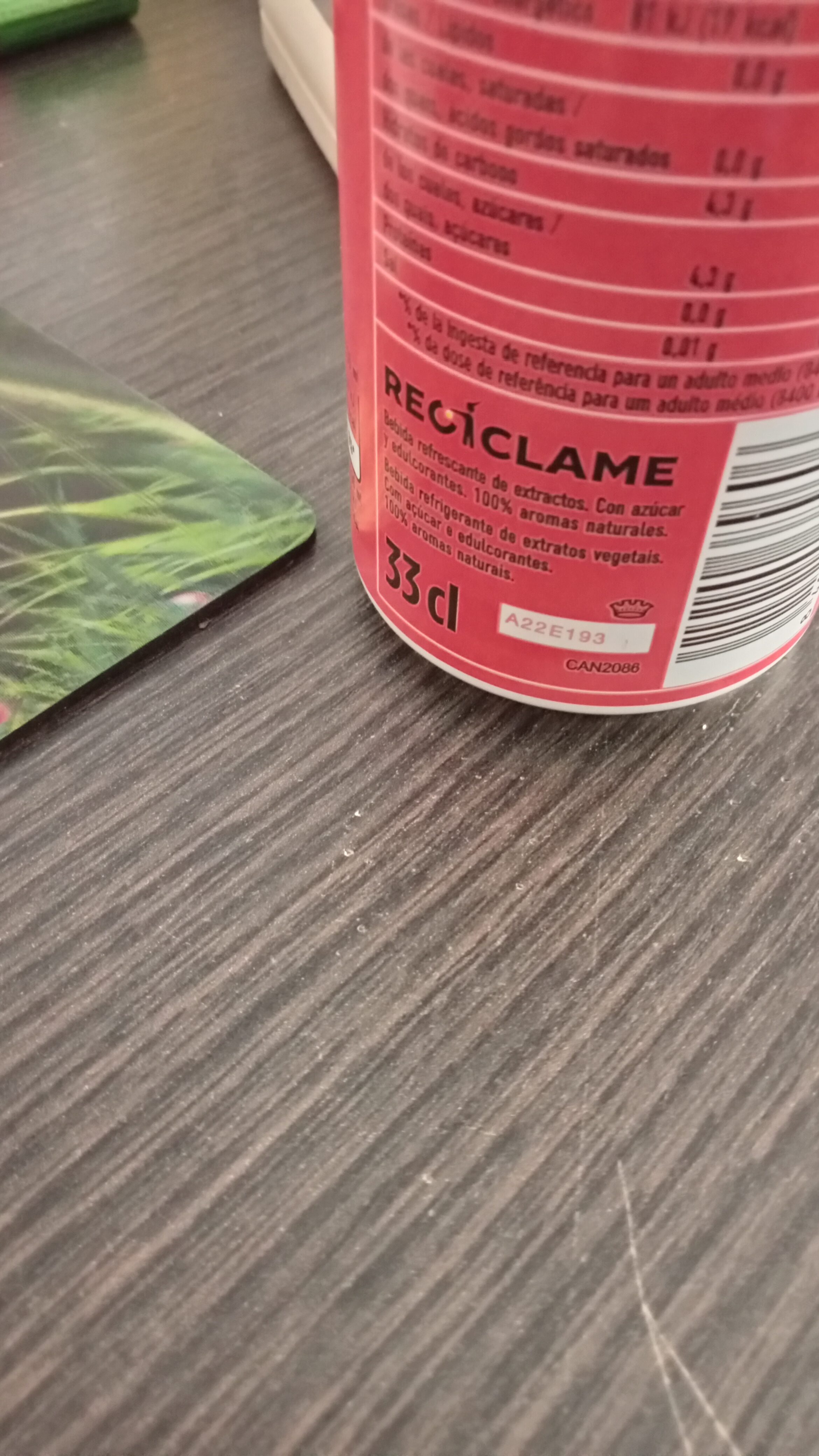Tónica Pink Baja en Calorias - Schweppes - 330ml
Aquesta pàgina del producte no està completa. Podeu ajudar a completar-la editant-la i afegint-hi més dades a partir de les fotos ja disponibles, o fent-ne més amb l'aplicació de androide o iPhone / iPad. Gràcies!
×
Codi de barres: 8414100389606 (EAN / EAN-13)
Nom comú: Bebida refrescante de extractos con quinina, azúcar y edulcorante
Quantitat: 330ml
Empaquetament: es:Green dot
Marques: Schweppes
Categories: Begudes, Begudes carbonatades, Refrescs, en:Tonic water, en:Tonic drink with sugar and artificial sweeteners
Etiquetes, certificacions, premis:
100% natural, Punt verd, Amb edulcorants
Enllaç a la pàgina del producte en el lloc oficial del productor: https://www.schweppes.es/refrescos/tonic...
Botigues: Mercadona
Països on es va vendre: Espanya
Matching with your preferences
Report a problem
Fonts de dades
Producte afegit per kiliweb
Última modificació de la pàgina del producte per smoothie-app.
La pàgina del producte, també editada per alia, musarana, yuka.CqBmDOyaE-UfHvHL064e1SiCM8S5AK5IBmw0og, yuka.YS90Y012MFpuUEpTdU1FVjRBMzJ3NHBFeEtmMmZ6bUdLc1E4SUE9PQ, yuka.sY2b0xO6T85zoF3NwEKvlkZ1btWHrhCdMiz6pEml6ouuAZ3Wb45D0o_Hbao, yuka.sY2b0xO6T85zoF3NwEKvlkdrc4vSkwubbw75lBC0ncWgMLC2XN9p44fWP6s.
